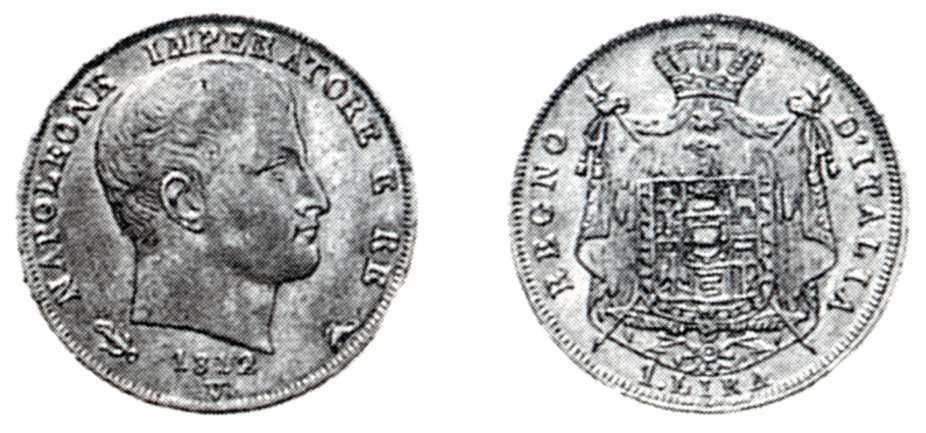
Napoleon's Lira: Italy's first 1 lira coin.
The Origin of the Lira
The word Lira (plural: Lire) comes from the latin
libra
(pound), a weight unit that corresponded to 327.45 gr. The Lira became
a monetary unit with the introduction by Charlemagne of the "heavy pound"
(Pondus Caroli) in 793 AD (408 gr.). From the Pondus Caroli
the mint masters of those times had to mint 240 deniers weighting
1.7 gr each. For a few centuries, the deniers were the only coins actually
minted while the Lira, due to it's high value, remained a "virtual" money
equal used for counting purposes only.
The first real Italian 1 Lira coin, was minted by Napoleon
on 1808 (look at the image below) for his short-lived Kingdom of Italy.
He also introduced the decimal system (lira = 100 centesimi)

Napoleon's Lira: Italy's first 1 lira coin.
The decimal system was then adopted by the Kingdom of Sardinia and then spread to whole Italy. Our current monetary system was born on 1861 with the re-unification of Italy under Vittorio Emanule II, former King of Sardinia. The Lira that we use today has remained the same since the re-unification, not having Italy undertake any monetary reform.
The last 1 lira coin was struck for circulation on 1959 (see the little aluminum coin below). Today it is still struck, but only to be included in mint and proof sets.
The last Italian 1 lira coin
On January 1st 2002 the Lira will be legal tender together with the Euro for 2 months. Then on March 1, 2002 only the Euro will be legal tender. If you want to learn more about the Italian Euro coins, please follow this link.
The last bank note to be printed in Italy was the 5,000 lire note "Bellini" on June 2000. Since that month, only Euros will be printed.
Most on the information used to write this page were taken from Cronaca Numismatica